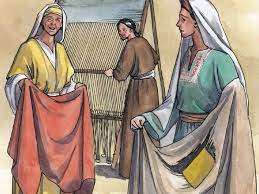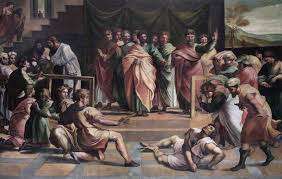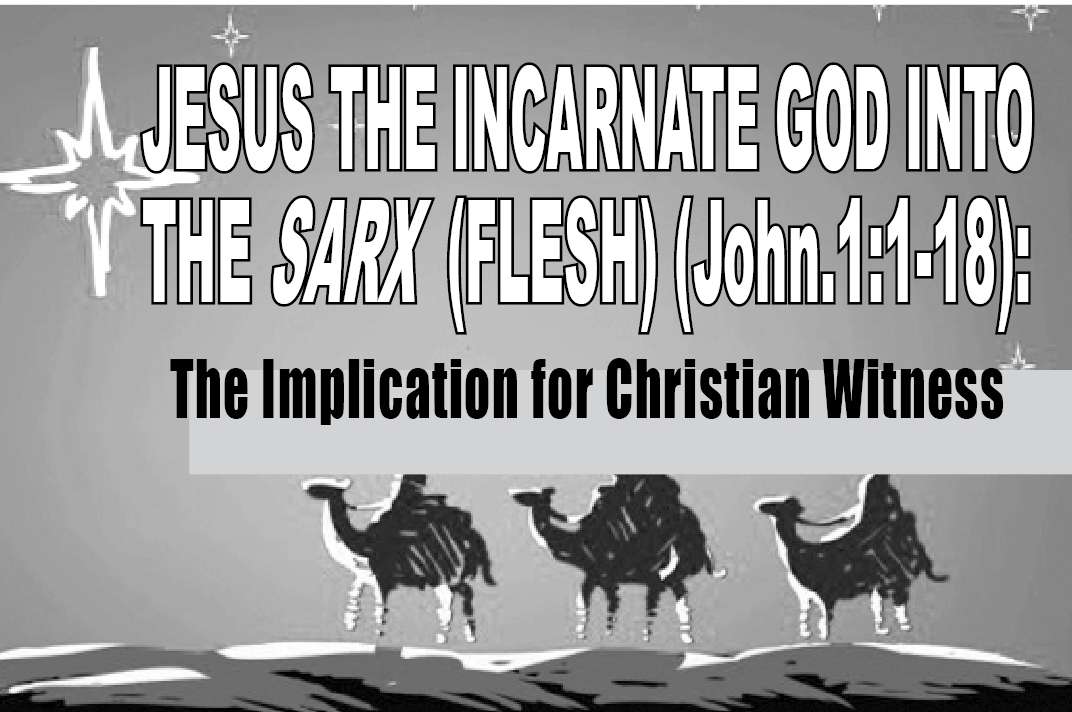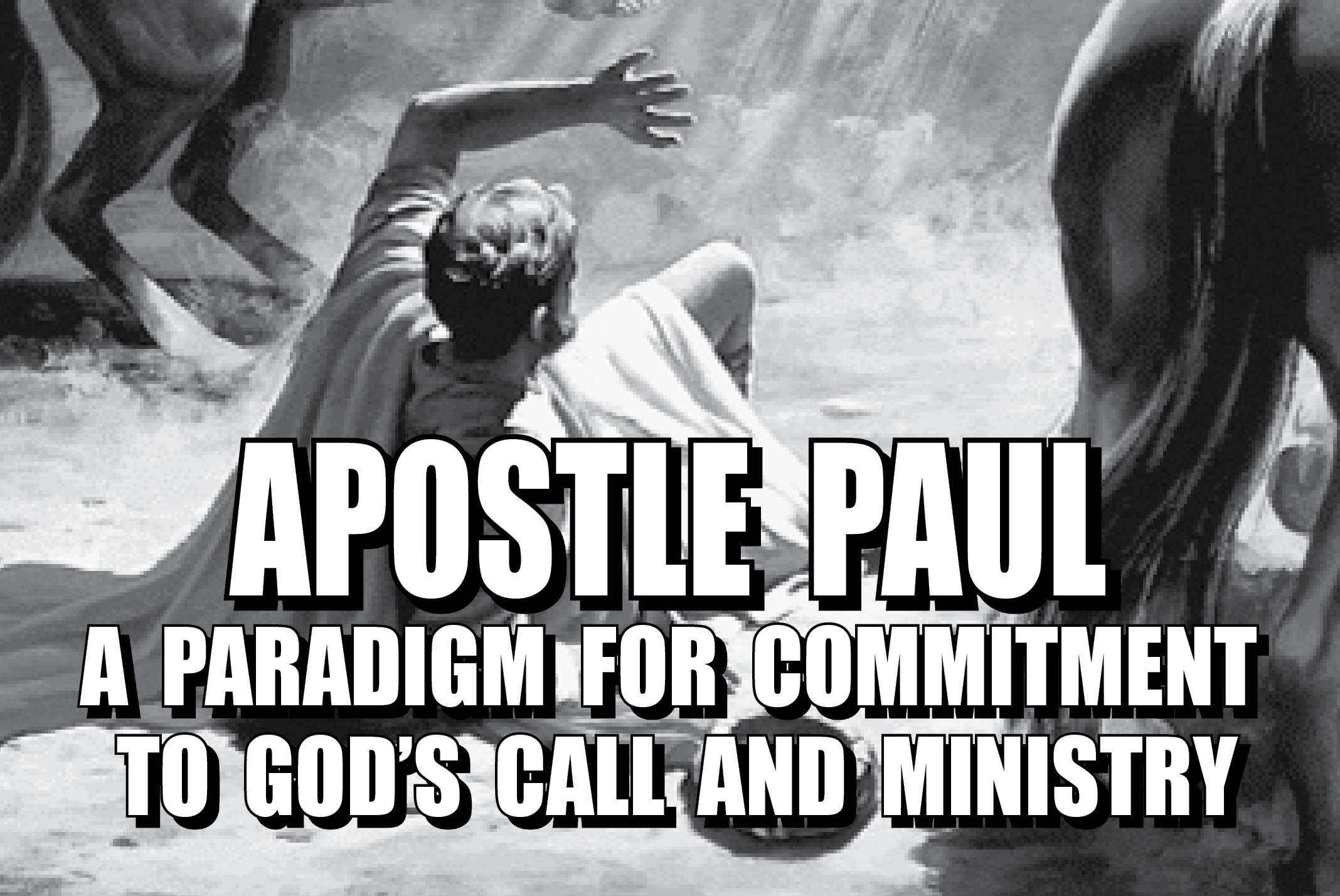

New Cloth and New Wineskins
Dr. Jose L.
Jesus used different analogies to teach his disciples and the crowd about topics such as the Kingdom of God, discipleship, dasting, dtewardship, trust in God, prayer, and God’s care for people etc. In the Gospels, Jesus explain the meaning of fasting through two imageries of sewing new cloth on an old garment and pouring new wine into old wineskins (Mk.2:18-22; Lk.5:33-39; Matt.9:14-17). As the best teacher ever seen by the world he taught through pictorial illustrations of rejecting the patchwork in life in order to receive the Kingdom of God.
Setting of the Analogy: Patchwork with New Cloth and New Wine with Old Clothes and Old Wineskins
The ministry of Jesus was in the light of the kingdom of God and the presence of the age of salvation (Mk1: 14, 15). The Jewish religious authorities like the scribes and the Pharisees opposed Jesus throughout his ministry. After Jesus healed the paralytic and had dinner at Levi’s house, a question of fasting was raised by John’s disciples and the Pharisees (Mk.2:18) to which Jesus gives the right response (Mk.2:19-22). Moreover, the image of a wedding with guests and the bridegroom describes the joy and celebration related to God’s Kingdom.
Here in this context the two imageries of old and new are thematically parallel to each other. Moreover, the scene is focusing on the presence of Jesus the bridegroom and the disciples’ relationship with the master. There is also a concealed passion overtone with the idea of the removal of the bridegroom and fasting.
John’s fasting is associated with the ascetic lifestyle leading towards repentance and humility in the light of the coming kingdom. The Pharisees also practiced fasting as a sign of their piety. Both John’s disciples as well as the Pharisees fasted regularly on Mondays and Thursdays (Lk.18:12). They fasted week after week and displayed dispondent faces like the hypocrites so that their fasting became obvious to people. Jesus said ‘when you fast, do not look sober as the hypocrites do, for they disfigure their faces to show men they are fasting’ (Matt.6:16). They also took offense because Jesus’ disciples were not fasting.
In contrast to this, during Jesus’ ministry, there are festive meals of ‘eating and drinking,’ table fellowship with ‘sinners’ (Mk.2:13-17). He is teaching his disciples that people receive forgiveness and the blessings of the Kingdom. Here, Jesus and the disciples are compared to the bridegroom and groomsmen who enjoyed one another’s presence. Jesus, probably metaphorically, alludes to the age of salvation that he brought in.
Jesus’ response to the question about fasting is that ‘the sons of the bridegroom cannot fast while the bridegroom is with them. Similarly, when the wedding festival is in progress, they cannot fast (Mk.2:19). Jesus’ sayings reflect the joyful spirit that accompanies the dawning consummation of the messianic kingdom. Here Jesus brings the biblical motif of the wedding imagery (Isa.54:4-8; 62:4-5; Ezek.16:1-63) as the portrait of his redemptive mission. The new age has already begun and the disciples are celebrating the coming age of the Messiah. However, they will fast when he has been ‘taken away’ (Mk.2:20).
New Wine and New cloth in the light of God’s Kingdom
Mark begins his gospel by presenting the good news of Jesus who is identified as both ‘Christ’ and ‘Son of God’ (Mk.1:1). The new eschatological salvation of God has been inaugurated by the arrival of Jesus, the Messiah. The first half of the gospel explains the ministry of Jesus with authority in and around the region of Galilee (Mk.1:14-8:30). The second half depicts Jesus’ travel towards Jerusalem and his death and the resurrection (Mk.8:31-16:8).
The Kingdom of God is inaugurated in Jesus’ ministry and the call to repentance to enter into God’s Kingdom (Mk.1:14, 15). By casting out the demons (Mk.1:23-27, 33-34; 3:11-12, 22-30; 5:1-20; 7:24-30); healing the sick (Mk.1:29-31, 32-34; 3:9-10; 5:29-34; 6:5, 54-56); cleansing the leper (Mk.1:40-45); healing the paralyzed (Mk2:1-12; 3:1-5); various other miracles (Mk.4:35-41; 6:35-44, 47-52; 7:31-37; 8:1-10, 22-26); raising the dead (Mk.5:21-24, 35-43) and forgiving the sins (Mk.2:5-7), the eschatological age of salvation has been dawned through the ministry of Jesus.
Mark portrays Jesus who inaugurated his Kingdom through word and deed. In this process he teaches his disciples and the crowd about fasting and prepares them to be part of God’s Kingdom. He used two illustrative examples drawn from the imagery of everyday life-wine and new clothes were both regular items at first century Palestine weddings. The sayings together emphasize the newness in the Kingdom that threatens the viability of the old unless and until it is transformed. Jesus invokes the example of a new piece of cloth affixed to an old garment for the purpose of mending it. The old garment probably has undergone the natural process of wearing out through days of use and repeated washing. If we put a new piece of cloth on an old garment, the new piece shrinks and leaves the tear bigger. So, it is not wise to match the new with the old unless it is made new.
Jesus came to inaugurate the gospel of the kingdom that brings newness- happiness, and joy into the life of the people. The new wine points out the wine from the recent harvest and it gives joy to the heart. The wine is produced out of grapes stored in tanned goatskins and because of the fermentation, the skins would expand. Old wineskins could not be used to pour new wine because they are already expanded to their limit. The result of putting new wine in old wineskins is that both the wine and the wineskins will be lost. The new patchwork will not work with the old garment similarly the new wine will not work with the old wineskins.
The Significance of Fasting
In its real sense, fasting is an expression of experiencing closeness with God, the bridegroom. It also possesses the religious significance of abstaining from eating and drinking to have fellowship with the Lord. In fasting people experience the close presence of God and communicate with God (Deut.9:9; Dan.9:3). It is also a time of repentance (Lev.16:29-31; 23:27-31; Numb.29:7). Prophet Isaiah redefines fasting in terms of feeding the hungry and fighting injustice (Isa.58:4-7).
The Pharisees and the Qumran community observed fasting twice a week (Lk.18:12; song.Sol.3:8). Pious Jews also observed fasting like Anna the prophetess (Lk.2:37).
Jesus himself took forty days of fasting before the commencement of his ministry and he also taught his disciples about fasting (Matt.6:16-18). The passage from Mark did not give an idea of negating the importance of fasting but gives us the significance of fasting. There is a probable allegorical application to the bridegroom as Jesus and when he will be removed from the disciples and then they will fast. Similarly the passage also points to the wedding celebration and the joy of the age of salvation now as they experience in the company of the bridegroom, the Lord Jesus.
Fasting is experiencing closeness and resting with Jesus, the bridegroom and enjoying his presence. It must be a time of fellowship with God and a time of rest for our souls (cf.Mt.11:28-30).
Jesus teaches them that fasting is not a patchwork patching the old with the new. It is not possible to patch the new cloth with the old during the time of fasting. In fasting, one must throw away the old clothes and make them new. It is to make us completely new and to receive a new garment of praise from the master (Isa.61:3). The master will clothe you with the new garment if you fast and stay close to him. If we stay close to him he will clothe us with a new vision in the place of old and he will remove the torn lives from us.
Wineskins are made out of animal skins and it is used to store wine. Making new wineskins out of the old was popular in ancient Palestine. The process of renewing the old wineskin was very important and necessary. The farmer used to make new wineskins out of the old through a strenuous process of cleansing. The shrunk old wineskins become hard and brittle because of the passing of time. The farmer washes the old wineskins thoroughly with fresh water. After drying up the soaked wineskins the farmer places the washed wineskins into oil tubs for some days. There is a tough process of washing and drying up before it is soaked up in the oil tubs for a period of time. After this process, the old wineskins become new, useful and stretchable enough to hold the new wine.
Spending time in fasting and meditating on God’s Word makes the believer like new wineskin ready to receive the new wine. Through the cleansing with the Word make the believer sanctified and humble. The new wine must be poured into the new lives. Becoming the new wineskin is very important through time of fasting.
BECOMING A NEW CREATION
For Mark, the new age of God’s reign has started and people started to experience the new creation (Gal.6:15; 2 Cor.5:17) instituted through the Gospel. The disciples function as authorized agents of God’s reign on earth as they participate in the redemptive work of Jesus.
The new garment and the new wine compare to the messianic mission of Jesus. The new wine requires new wineskins. The old cannot be modified with the new patch and if we do it will tear its patch. Similarly, the new wine also cannot be contained in the old wineskins. Fasting is not to engage in patchwork rather fasting is a time to create total transformation and renewal in the life of the people.
The old wine was once useful and the Jewish religious system was ordained by God. Now it is through Jesus, the new life is established and the new wineskin is needed to pour the new wine. Apostle Paul says ‘do not be drunk with wine that causes debauchery but be filled with the Spirit’ (Eph.5:18). The new relationship will create joy in the Lord and the new wine will give new experiences. Moreover, the new age will give us the abundant life in the Lord. The new wine will give us a new atmosphere of love for God which cannot be contained in the old wineskins. This imagery also explains the dynamism of the newness of the present moment in the context of the arrival of the King and the dynamic effect of the Kingdom of God upon the established religious traditions.
In fasting, we recognize God’s reign over our lives and submit our lives completely for renewal. Fasting is to obtain a new garment and new wineskin. God will give us new clothing as we stays close to him through fasting and meditating on His word. Through fasting, one becomes tender, humble, and clean in order to receive new wine into the new wineskins.








